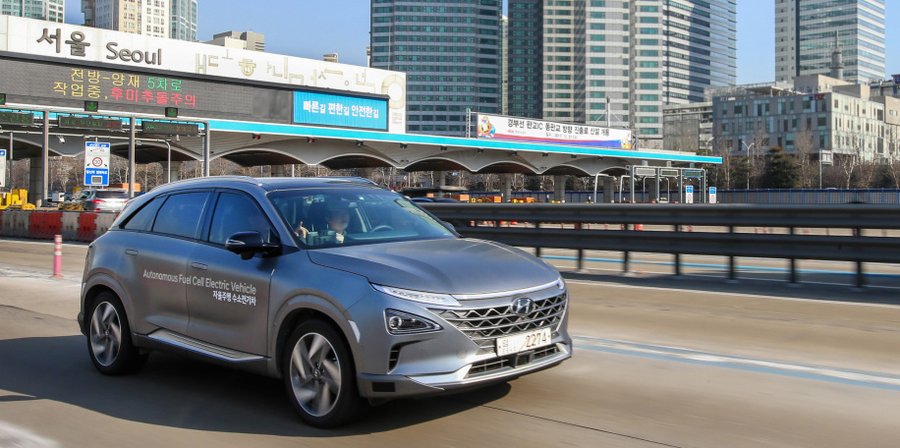Hyundai takes fully autonomous fuel cell vehicles on 70 mph road trip

It's a world first for fuel cell powered vehicles to reach Level 4 autonomous driving, which translates as "mind off" driving with no driver input needed.
One of the interesting things about the NEXO fleet's trial is that it was performed in regular traffic at public highways, at speeds up to nearly 70mph. Earlier autonomous car testing in Korea has been performed on selected sections of road and at lower speeds than the highest allowed Korean highway speed reached in this trial. Hyundai says the test drive included following the traffic's flow, completing lane changes, and even handling motorway toll booths — and that the only human intervention needed was pressing "Cruise" and "Set" buttons on the three cars' steering wheels, to put them in autonomous mode.
The NEXO has been designed as a hydrogen fuel cell car from the ground up, instead of the earlier, ICE-based Tucson FCEV. Hyundai claims a target range of 500 miles (NEDC) for the NEXO, for a single, five-minute hydrogen charge, and a system efficiency of 60 percent. On the run to CES from L.A. last month, Hyundai declared a real-world range of 360 miles for the tested NEXO; the 120-kW motor takes the fuel cell crossover to 60 mph in 9.9 seconds. The vehicles used in the South Korean trial use a combination of radar, lidar and cameras to monitor their surroundings, and some of these systems are already used in production Hyundai vehicles. At CES, Hyundai announced its partnership with Aurora Innovation, which is a Silicon Valley startup set up by former Alphabet Inc and Tesla engineers; the autonomous NEXOs are likely to feature Aurora's input.
Hyundai sees commercialization of Level 4 vehicles taking place in 2021, though only in what it calls "pilot smart cities," or locations tailored to be connected enough to make the implementation of autonomous tech easier. "Fully" autonomous driving would be at commercial level by 2030. As for the vehicle itself, it features virtual assistant technology that is complemented with noise canceling to further turn the NEXO into a cocoon-like pod; there's also "Home Connect" tech which enables the passengers to use smart home gadgets remotely during their commute.
